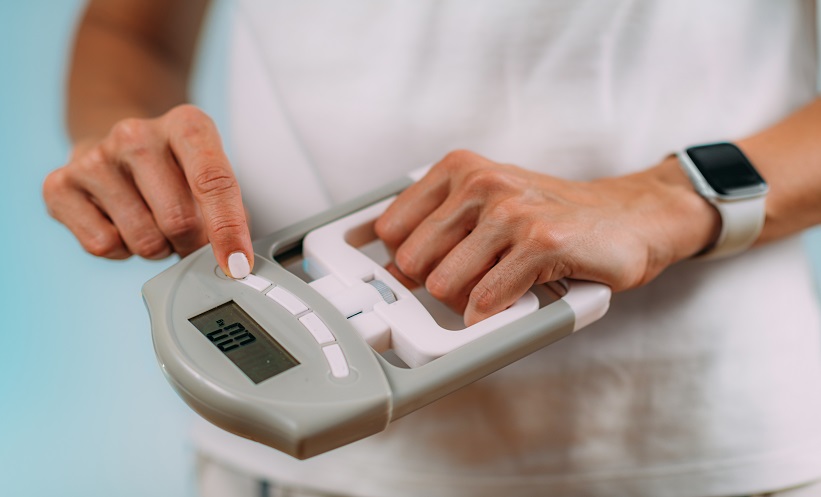Anaya Malik | Editorial Manager
Citation: EMJ Diabet. 2022;10[1]:17-19. DOI/10.33590/emjdiabet/10013792. https://doi.org/10.33590/emjdiabet/10013792.
![]()
THIS year’s European Association for the Study of Diabetes (EASD) Annual Meeting 2022 was a hybrid congress, which focused on inclusion and interaction within the global diabetes community whether participants attended in person in Stockholm, Sweden, or virtually.
In front of a live audience, Richard Holt, Professor in Diabetes and Endocrinology at University of Southampton, UK, delivered the presentation, ‘“I just called to say I love you…” Diabetes tools for telemedicine: What we learned from COVID-19 and beyond?’ Holt spoke on how telemedicine has become increasingly popular in diabetes consultations, and how there has been a major rise in its use as a result of the pandemic. Holt reviewed the evidence on telemedicine for diabetes care, before exploring the practical issues experienced by patients and healthcare professionals during the pandemic, taking these as lessons to better inform how we can use telemedicine going forward. The COVID-19 pandemic has led to a rapid expansion of the use of telemedicine, and many have had to adapt to the use of this in diabetes care.THE RISE OF TELEMEDICINE
Telemedicine is the process by which healthcare professionals evaluate, diagnose, and treat patients at a distance using telecommunications technology. First reports of the use of telemedicine date back to the 1950s when hospitals in the USA used the telephone as a medium of providing care for people. An upsurge in the use of telemedicine resulted from the advent of the internet, which made profound changes in the practice of telemedicine. Prior to the COVID-19 pandemic, there was a steady increase in the number of articles published on the use and effectiveness of telemedicine. Holt presented results from a PubMed® search that showed a steep increase in the number of articles published on the topic of diabetes in telemedicine in 2020 and 2021 compared to previous years. Holt explained that this was unsurprising given the rapid adaptation to telemedicine when face-to-face consultations were not possible.
THE DRIVE FOR TELEMEDICINE
For patients, telemedicine offers convenience and flexibility: a telephone or video consultation is less time-consuming than an in-person appointment where travel time and expense must be accounted for. Patients are not obliged to take time off work, experience less interference with child or family responsibilities, and a sense of privacy is developed when people take appointments from the comfort of their own homes. Crucially, during the pandemic this meant people were not exposed to potentially contagious infections in doctor’s surgeries or in hospitals.
Healthcare professionals who adopt telemedicine may experience fewer missed appointments or cancellations, which may translate to better follow-up and therefore improved health outcomes. Appointments taken over telephone or video calls may be considered more time and cost efficient. A proof-of-concept randomised trial in 20131 showed that clinician time requirements could be reduced by 40% with remote management of diabetes. The practice of telehealth in medical consultations during and after the pandemic, however, did not always meet these expectations, Holt reflected.
TECHNOLOGIES USED IN DIABETES TELEMEDICINE
An increasing number of technologies are being used in telemedicine for diabetes, and one can expect to see this range rapidly expanding in coming years. People are communicating using the telephone, social media, and email as a means of delivering care to patients. Patient portals now give people access to their health records and consultation history. Face-to-face diabetes self-management education has in part been moved online and apps have been developed to support clinical care. For example, DigiBete (DigiBete Ltd, Leeds, UK) is a video platform and app designed to support young people in the management of Type 1 diabetes, created in collaboration with the National Health Service (NHS) and by the Diabetes Team at Leeds Children’s Hospital, UK. The platform provides two-way communication with patients and clinics. For Holt, one of the tools that made the biggest impact in continuing care during the pandemic was the development of cloud-based management systems, for example LibreView (Abbott Laboratories, Chicago, Illinois, USA) or Dexcom Clarity (DexCom, Inc., San Diego, California, USA). These allow clinicians to look at glucose profiles of people with diabetes remotely.
HOW EFFECTIVE IS TELEMEDICINE IN DIABETES CARE?
A meta-analysis of 32 articles on telemedicine in primary healthcare for the management of patients with Type 2 diabetes demonstrated that telemedicine had a favourable effect on diabetes care.2 Holt described the outcomes of the study, which showed that telemedicine interventions may help patients with Type 2 diabetes to effectively control blood glucose and improve self-management in primary healthcare. The analysis showed that telemedicine leads to a reduction in HbA1c, a reduction in fasting and post-prandial glucose, and reduction in blood pressure. The greatest reduction of HbA1c was observed after 6 months, but most studies that were analysed were 6 months in duration and the number of patients in shorter- and longer-term studies was small. Holt cautioned that more longer-term studies may be needed to look at effectiveness of telemedicine over a long period of time.
LIMITATIONS DURING THE PANDEMIC AND BEYOND
When face-to-face consultations could not go ahead in the UK, it was reported that estimated HbA1c did not change. However, during the pandemic it was estimated that as a result of lack of face-to-face consultations there were as many as 60,000 cases of diabetes in the UK that were missed.3 Moin et al.4 demonstrated that in Canada, there were less retinal examinations and less HbA1c and lipid measurements taken. The long-term consequences of this are as of yet unknown.
Practicalities often cause barriers to the smooth execution of delivering remote care. Healthcare professionals and patients may expect communication with reliable technology, data uploaded to the appropriate platform, clear expectations for the consultation, and a private space in which to discuss care. In reality, patients are often without the appropriate technology, for example a webcam, and are unprepared, in an inappropriate environment for a consultation, or do not answer the telephone.
To combat the factors that compromise the efficiency of delivering telemedicine in diabetes, Holt suggested further planning and evaluating of remote consultation services framework, improving competency of healthcare professionals, and embracing and acknowledging the novelty of the approach.
Telemedicine can be used to deliver effective diabetes care but cannot replace all in-person consultations, Holt concluded, suggesting a hybrid approach to health services. Nevertheless, healthcare professionals need to have the ability adapt in order to be able to deliver telemedicine in a way that maximises its impact.
References- Leichter SB et al. Impact of remote management of diabetes via computer: the 360 study—a proof-of-concept randomized trial. Diabetes Technol Ther. 2013;15(5):434-8.
- Zhang A et al. A meta-analysis of the effectiveness of telemedicine in glycemic management among patients with type 2 diabetes in primary care. Int J Environ Res Public Health. 2022;19(7):4173.
- Carr MJ et al. Impact of COVID-19 on diagnoses, monitoring, and mortality in people with type 2 diabetes in the UK. Lancet Diabetes Endocrinol. 2021;9(7):413-5.
- Moin JS et al. Impact of the COVID-19 pandemic on diabetes care for adults with type 2 diabetes in Ontario, Canada. Can J Diabetes. 2022:2;S1499-2671(22)00094-6.







